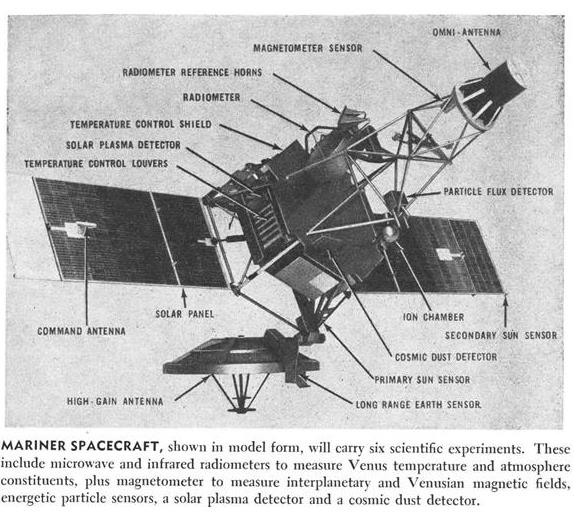[if you’re new to the Journey, read this to see what we’re all about!]

by Gideon Marcus
If familiarity breeds contempt, then enigma must breed fascination. So it has been with the planet Venus. "Earth's twin" in size and density, the second planet out from the sun is, in fact, the closest planet to us. Yet, thanks to its shroud of clouds, very little can be determined of its nature. At least, such was the state when I wrote my first article on the planet just three years ago.
Things are changing.
Opened eyes improve vision of Venus
Until recently, humanity was limited to examining the universe in the narrow band of light frequencies discernible to the eye. That's actually a tiny portion of the electromagnetic (EM) spectrum, which ranges from super-high frequency gamma rays, down through X-Rays, microwaves, and ultraviolet light, passes quickly through the visual light spectrum, and then to the lower-frequency infrared and radio waves.

In the last decade, we have developed ways of probing many of these EM bands from the Earth's surface, and they have begun to reveal Venus' true nature. For instance, measuring microwave emissions from the planet, we find that the dark side simmers at a whopping 650 degrees Kelvin (710 degrees Fahrenheit). Radio wave measurements seem to confirm this figure.
The atmospheric pressure at "sea level" is some 50 times greater than on Earth. It is not certain what components make up the Venusian atmosphere, but likely gases are Carbon Dioxide, Nitrogen, and water, in order of amount. This combination is what causes the planet to swelter so – the air creates a greenhouse effect, trapping heat like a blanket. The surface of Venus is probably like an oven, extremely dry (despite the potential for water vapor in high clouds), dimly lit by a blurry yellow sun, largely windless, and extremely inhospitable. So much for the jungle-covered Amtor of Edgar Rice Burroughs.
Using radar, scientists have learned that Venus is more reflective than the moon (presumably the surface, or whatever the waves are bouncing off of, is smoother). It has also been determined that Venus, if it rotates at all, does so extremely slowly. A Venusian day may well be as long as its year: 225 days. Scientists have used radar observations to confirm the greenhouse atmospheric model over others that had been advanced in the absence of data. Radar also has given us a better idea exactly how far away the planet is from us, a critical piece of information for plotting the course of investigating spacecraft. Which brings us to…
Let the onslaught begin
Every 19 months, the Earth and Venus are as favorably aligned in their orbits as they can get; that is the opportunity to send the heaviest spacecraft (i.e. with the most experiments) to investigate. The first chance of the Space Age to send a probe to Venus took place in summer of 1959 – too soon for either superpower to loft a probe. The United States did send up Pioneer 5 to the orbit of Venus in March 1960 to test long distance communications, however.
The next alignment took place in February 1961. No American probe was ready, but the Soviet https://galacticjourney.org/tag/venera-1/Venera 1 almost made it to Venus before mysteriously going silent.
19 months have elapsed again, and this time, both major participants in the Space Race are ready. Just a few days ago, the Soviets launched another Venera. It failed to depart Earth's orbit and will likely decay in a few days, but I can't imagine it will be their only attempt. Last month, America's first try, Mariner 1, veered off course and had to be destroyed after only five minutes in flight.
Of course, I wouldn't be talking about this if I didn't have good news. This morning, a new Mariner rose to the heavens atop an Atlas Agena rocket, and this one is safely on a course for the Planet of Love.

It's a little probe, really a close cousin to the Ranger probes that have had such ill luck with the moon. NASA had hoped to send a larger spacecraft, but the new Centaur second stage booster isn't ready yet. So the Agena-propelled Mariner carries just 40 pounds of equipment. There's no camera onboard, for Mariner lacks the cargo to carry a strong enough transmitter to send pictures.
But there are several experiments that will be just as valuable. For instance, there is a pair of radiometers that will tell us, once and for all, just how warm Venus really is. There are a series of particle counters that will measure radiation both on the way to and in the vicinity of the planet. This kind of exploration of interplanetary space has only been done once before, and it tells us volumes about the sun and how it affects us. We will also learn about the fields of electrical force surrounding Venus.
To that end, Mariner 2 also carries a magnetometer, designed to tell us the strength and disposition of Venus' magnetic field. I've got a personal stake in this little experiment as two good friends, Chuck Sonett and Paul Coleman, are vital members of the team that built it. These fine fellows worked in the private sector on Pioneer 5, and now NASA has seduced them onto the government payroll. A win for the United States, I'd say!

So stay tuned. Mariner will reach Venus in December, and if the probe still be active come then, you can bet there will be a bonanza of scientific results – and you'll be able to read all about it at Galactic Journey!
—


Thanks for this most interesting post. Now the writers can start writing about desert Venus. I'm sure ERB would have done it very well; perhaps better than Amtor.
Looking forward to that December post.
Jungles, swamps, dinosaurs, and ferns, I'm telling ya….